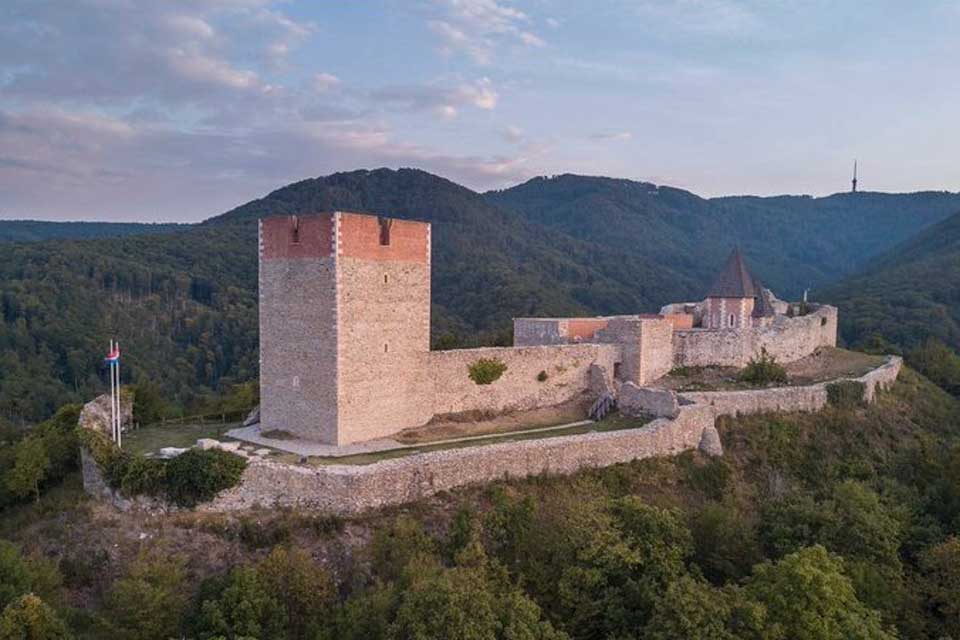Medvedgrad is a medieval castle located on the southern slope of the Medvenica mountain near Zagreb. New centre welcomes visitors
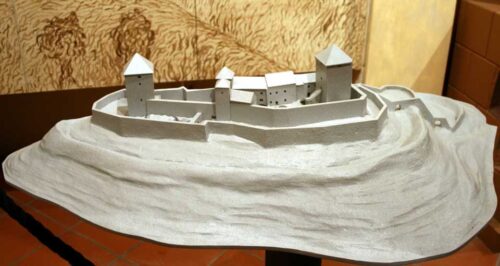
The rebuilt ruins of a splendid medieval castle, Medvedgrad, may be found just north of Zagreb. Recently opened, a new visitor centre at the rebuilt Castle tells the story of the Medvedgrad, Medieval Croatia and the surrounding Nature Park Medvenica.
Medvedgrad rests on the borderline between the eastern parts of the Alps and the western part of the Pannonian Basin. The Castle rests high above the capital city of Zagreb, and functions as a gateway to the idea of Croatia as an independent state, albeit with a long and tortuous history.
The fortified Castle was excavated between 1979 and 1987 and dated to the period between 1249 and 1254. Presumably, it was built to defend the lowland against the Mongolian invasion 1235-41; and more precisely, supporting the defence of the medieval settlement and trading station, Gradec, which later grew into Zagreb.
Medvedgrad belongs to a large group of castles erected around 1250 by Béla IV (1206-1270), King of Hungary and Croatia. The men in charge of the construction were the Bishop, Phillip of Türje and a local prelate, Benko. The Castle was built to hold the royal insignia and treasure, according to legend. During the later Middle Ages, the Castle was gradually left to decay until 1590, when an earthquake finally destroyed the Castle. Presumably, it played a substantial role in the history of Croatia – and not least that of Medieval Croatia. Nevertheless, to grasp the proper role of the castle, demands a discerning eye towards the history of Croatia since the 19th century
The Civil War and Medvedgrad
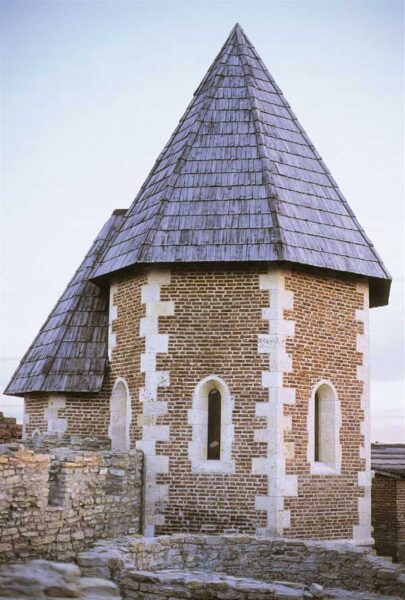
After 1992 and the end of the civil war in former Yugoslavia, the ruins of the Castle were – against the uproar of historians and archaeologists – appropriated by Franjo Tuđman and “revitalised” as a memorial to the fallen soldiers from all the wars “fought to secure the independence of the Croatian Nation”. Complete with an eternal flame and the erection of an “Altar for the Croatian Nation”, the construction was halted after the death of Tuđman in 1999. Those Croatians, who did not subscribe to this medieval myth, erected an alternative memorial at the central cemetery of Mirogoj, a wailing wall with 3000 names inscribed.
Defying the idea of nationalism as civil religion, this alternative memorial – “Voice of Croatian Victims – Wall of Pain” is nevertheless not part of the official tourist itinerary. As opposed to Medvedgrad.
Although the Catholic Primas of Croatia in 1994 characterised the construction of the “national altar” as a sordid profanation, the Medvedgrad is nevertheless still symbolically imbued with an aura of being the shrine of “the oldest nations” and one of the first “cultural centres” of Europe.
This identification of Medvedgrad as a “national symbol” grew out of the romantic endeavours of the historian Ivan Kukuljević Sakçinski, who in 1843 was one of the first to speak Croatian instead of (Illyrian) Latin in the parliament in Zagreb. He dug up the legend about Empress Barbara Celjska, “The Black Queen”, who was said to have sold her soul to the devil to enlist the dark lord in defeating the Ottomans. Always dressed in black, she still roams the forests together with her raven pet, terrorising the locals while doing her utmost to defend her Castle and Catholic Croatia against “the infidels”.
Despite the protests voiced by historians, art historians and archaeologists, the motte and the palace were rebuilt in the 1990s as part of the planned resurrection of the fabled medieval nation, Croatia.
However, the identification of the site as a national shrine was recently downplayed if not silenced in an effort to reclaim a more modern Croatia post-2013. Part of this project was to secure EU funding for the development of Medvenica as a Nature Park and centre for sustainable tourism. Following this, structural funds were secured after 2018 to build a New Visitor Centre.
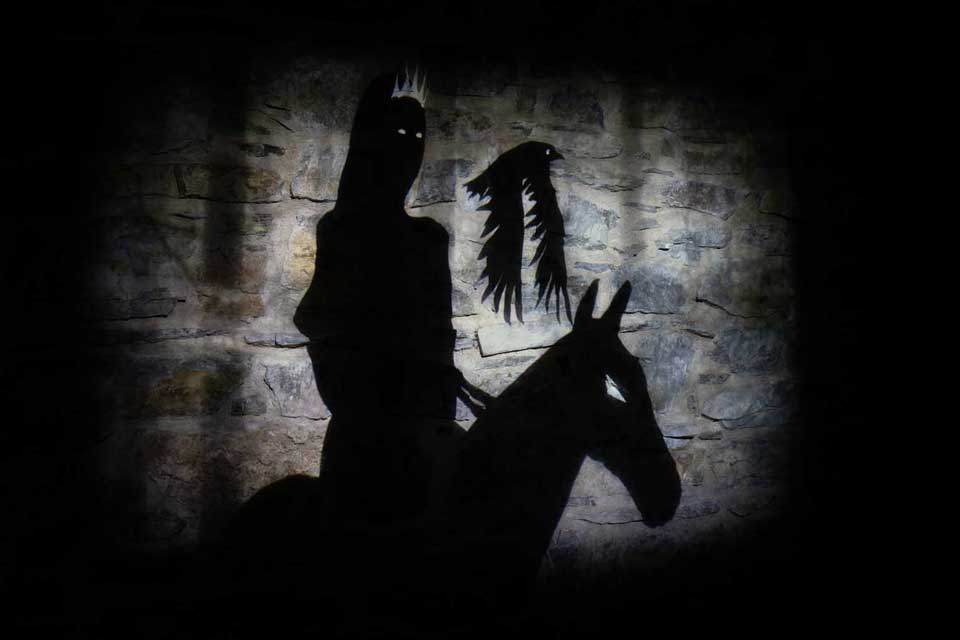
The New Visitor Centre
The new visitor centre represents a very modern and different take on recent Croatian history by diverting the visitor from the historical ramifications of the more or less mythical medieval past towards the surrounding nature: the Nature Park of Medvenica. Among the fifteen reasons to visit Medvedgrad listed on the new website, the first six point towards hikes and rides in the surrounding mountains. The rest focus on the romantic myth of the Black Queen, medieval reenactments and markets. Thus, at the centre are two new exhibitions titled the Ancient Forest Kingdom and the Secrets of the Ancient Mountain. Both exhibitions are curated to circumvent the blatant nationalism of the 1990s. Instead, the cultural identity seeking of the 21st century Croatians is directed towards nature and the biodiversity crisis.
Nature Park Medvenica
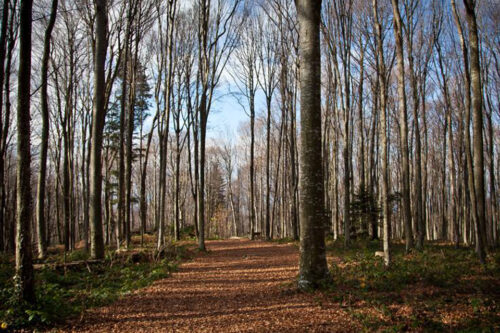
The Castle is the gateway to the Nature Park Medvenica, covering 179 km2. It rises on the low mountains north of Zagreb with the highest point 1035 m above sea level at Sljeme. The Park comprises ten separate forest reserves in which three trees are protected as part of the national treasure, one linden and two yews.
Most of the Park is covered in beech trees. Nevertheless, the biodiversity score is high, preserving more than 1200 different plant species belonging to the flora characteristic of a moderate continental climate. The soil is somewhat acidic. The mountainous area was declared a Nature Park in 1981. According to IUCN, it is categorised as V, which means that sustainable usage of resources is allowed.
The forest covers two-thirds, with the rest being grassland, cultivated areas, roads and settlements. Already in 1861, the German botanist Carl Julius Meyer Von Klingräff studied the botanic heritage. Today, the Park is declared Natura 2000 and is home to 20 target species and eight target habitat types. There are also 54 strictly protected and 154 protected plant species in the Park. One of the strictly protected species is the common yew (Taxus baccata), a beautiful conifer which is also successfully grown in cities but is very rare and endangered in its natural habitats all over Europe. On Medvednica, it grows in rocky and damp places within beech and beech-silver fir forests. In Horvatove stube and Lipa areas, yew forms a special community – linden and yew forest.
Medvenica offers 70 hiking trails, nine biking trails, educational trails, chapels and small churches as well as two hotels, eleven mountain lodges, eight restaurants and a ski resort. As the Nature Park was never covered by a binding spatial and managerial plan, developers have constantly pressured the Park, aiming at residential sprawl, attracting tourism or supplying avenues for nature sport.
The main tourist attractions – apart from the Castle – are a cave (Veternica) and the Zrisnski mine. The closeness to Zagreb invites more than one million visitors a year, constituting a massive pressure on the natural heritage. Especially, winter tourism represents a challenge.
Initially, the Park covered 228 km. However, in 2008 the area was decreased by 25%. Between 2010 and 2015, a significant research programme was carried out at the University of Freiburg, studying the participation of stakeholders in the plans for the preservation of Medvenica. To a large extent, this study has uncovered the political dilemmas of the democratic involvement of stakeholders in the future planning process of the Nature Park.
VISIT
SOURCES:
Nature Park Medvenica. The Strategy and Action Plan of Suatainable Tourism 2014 -2018.
Public Institution NP Medvenica,
Zagreb 2014.
Der Kroatische “Altar des Vaterlandes” in Medvedgrad.
By Anna Maria Grünfelder and Daniel Lalić.
From: Religiöse Erinnerungsorte in Ostmitteleuropa: Konstitution und Konkurrenz im nationen- und epochenübergreifenden Zugriff
Ed. by Joachim Bahlcke, Stefan Rohdewald, and Thomas Wünsch
Walter de Gruyter, 2013. Pp. 430-438
A Grounded Theory approach for deconstructing the role of participation in spatial planning: Insights from Nature Park Medvednica, Croatia
By Nataša Lovrić, Marko Lovrić and Werner Konold
In: Forest Policy and Economics (2018) Volume 87, February, pp. 20-34
Tales of nature and the medieval past.
By Melita Trbušić,
From: Interpret Europe Newsletter 4-2021, pp. 26-27
